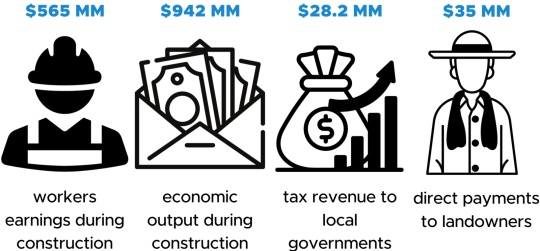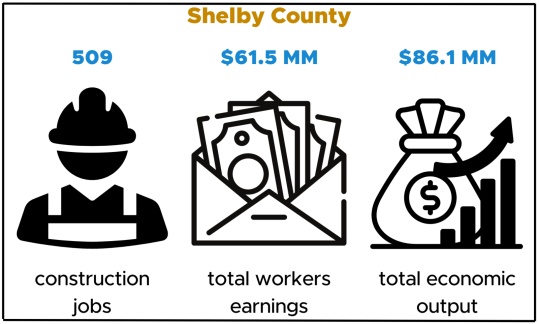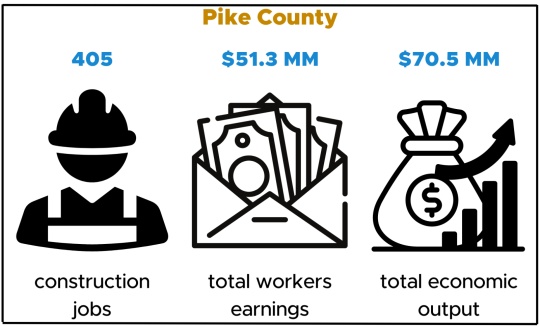Illinois Leads in Installed Land-Based Wind Power in 2023
SAINT PAUL, MINN. (December 12, 2023) -- Illinois is having a good year with wind. Despite land-based wind installations falling 77 percent in the third quarter compared to the same quarter last year, the American Clean Power Association's (ACP), Third Quarter 2023 Report, shows that Illinois is ranked first in the nation for installed land-based wind power year to date. Two projects came online in the first three quarters for a combined 454 Megawatts (MW).

Illinois currently has 8,643 MW of operating wind, solar, and battery storage capacity and ranks 5th in the nation. Combined, wind, solar, and energy storage plants provide 14.2% of all the electricity produced in Illinois, and 3.1 million homes can be powered by the clean energy generated in Illinois.
As of the third quarter 2023, Illinois has 3,285 MW of clean power capacity under construction, ranking 1st in the Midwest and 4th nationally.
There is more to come. Illinois has another 2,007 MW of clean power in advanced development, ranking 2nd in the Midwest. This means projects have a Power Purchase Agreement (PPA), firm equipment order, and/or are moving forward with plans to be placed under utility ownership but have not yet started construction.
Meeting 100% Clean Energy Goals Requires Transmission
In 2021, Illinois passed the Climate and Equitable Jobs Act (CEJA) legislation calling for 100% clean energy by 2050. To meet Illinois' clean energy goal and deliver low-cost energy when and where it is needed, more transmission is needed.
"There is no energy transition without transmission. Illinois has a golden opportunity to plan for the grid of the future and achieve the goals set out in CEJA by encouraging transmission buildout without delays," said Clean Grid Alliance Vice President of Advocacy Jeff Danielson.
The clean energy Illinois produces is only valuable if it can be transported to the communities, homes, and businesses that need it. And transmission projects are also needed to ensure low-cost electricity can be delivered reliably. But many transmission lines are 50 years or older and need repairs and upgrades.
Clean Energy and Transmission are Jobs Drivers
Transmission also delivers good family-supporting jobs in the states where they are located and they generate payments to local governments, strengthening the local tax base, improving county services and local infrastructure.
The Grain Belt Transmission Project is an example of a high voltage direct current (HVDC) transmission line that will deliver electricity between Ford County, Kansas and Clark County, Illinois. According to the Strategic Economic Research (SER) Economic Impact Analysis of the Grain Belt Express Transmission Project on the State of Illinois, this transmission line represents a $7 billion investment. The analysis anticipates the economic impacts of the first 20 years of the project to result in nearly 5,000 jobs during construction in Illinois and over 30 long-term jobs in Illinois.

The figure above shows the earnings and output during construction of the Grain Belt Express Line, and the tax revenue and payments to landowners involved, for the state of Illinois.
In addition, the Midcontinent Independent System Operator (MISO) has approved an 18-line long-range transmission plan (LRTP) that will enable 53 gigawatts of renewable energy. Four LRTP lines are planned in Illinois by 2030. When those lines are energized, it is estimated that nearly 8,000 MW of renewable energy will be enabled, and 32,000 jobs will result from transmission and renewable energy development. Furthermore, an estimated 1.8 million homes will be powered by clean energy once the LRTP lines are completed.
# # #
The figures below show jobs, workers earnings, and economic output for Shelby, Pike, and Clark Counties in Illinois.

 All jobs' numbers are full-time equivalent jobs and include direct, indirect, and induced jobs. Workers Earnings include the wages, salaries, and benefits associated with these jobs. Economic Output is the value of goods and services produced in the state or local economy and is an equivalent measure to GDP.
All jobs' numbers are full-time equivalent jobs and include direct, indirect, and induced jobs. Workers Earnings include the wages, salaries, and benefits associated with these jobs. Economic Output is the value of goods and services produced in the state or local economy and is an equivalent measure to GDP.About Clean Grid Alliance (CGA)
CGA is a 501(c)(3) nonprofit organization based in St. Paul, Minn., whose mission is to advance renewable energy in the Midwest. Launched in 2001, CGA has been an active stakeholder in the Midcontinent Independent System Operator (MISO) process at the state and regional levels and a leading organization working on transforming state energy policy. CGA's membership includes industry representatives working in wind, solar and storage as well as environmental nonprofit organizations, public interest groups, clean energy advocates, farm groups, and businesses providing goods and services to the renewable energy industry who come together to reduce carbon and deliver a renewable energy future. Learn more at www.cleangridalliance.org and @CGA_Midwest.
Molly Vagle
Communications Associate
Clean Grid Alliance
mvagle@cleangridalliance.org